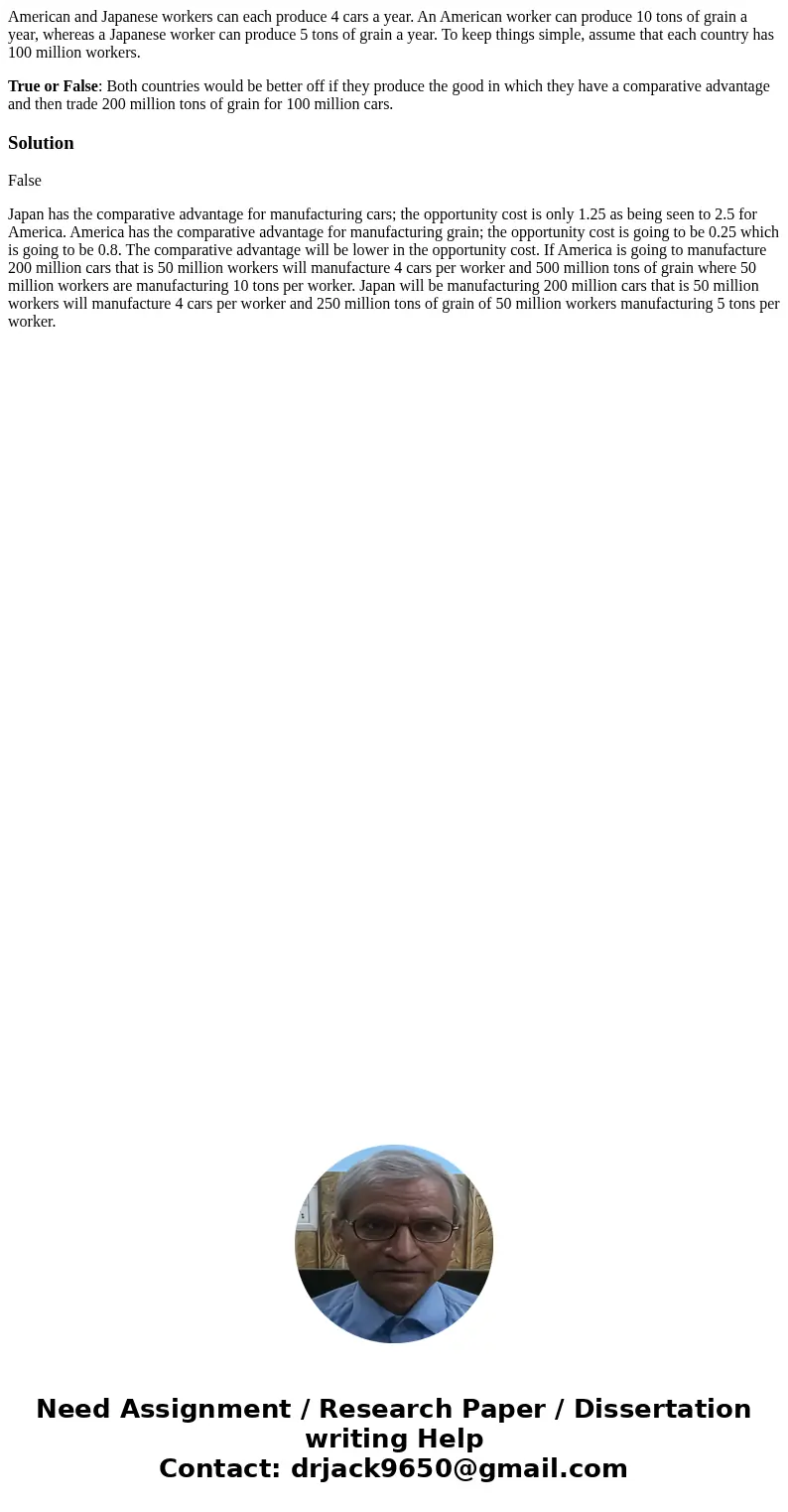American and Japanese workers can each produce 4 cars a year
American and Japanese workers can each produce 4 cars a year. An American worker can produce 10 tons of grain a year, whereas a Japanese worker can produce 5 tons of grain a year. To keep things simple, assume that each country has 100 million workers.
True or False: Both countries would be better off if they produce the good in which they have a comparative advantage and then trade 200 million tons of grain for 100 million cars.
Solution
False
Japan has the comparative advantage for manufacturing cars; the opportunity cost is only 1.25 as being seen to 2.5 for America. America has the comparative advantage for manufacturing grain; the opportunity cost is going to be 0.25 which is going to be 0.8. The comparative advantage will be lower in the opportunity cost. If America is going to manufacture 200 million cars that is 50 million workers will manufacture 4 cars per worker and 500 million tons of grain where 50 million workers are manufacturing 10 tons per worker. Japan will be manufacturing 200 million cars that is 50 million workers will manufacture 4 cars per worker and 250 million tons of grain of 50 million workers manufacturing 5 tons per worker.

 Homework Sourse
Homework Sourse